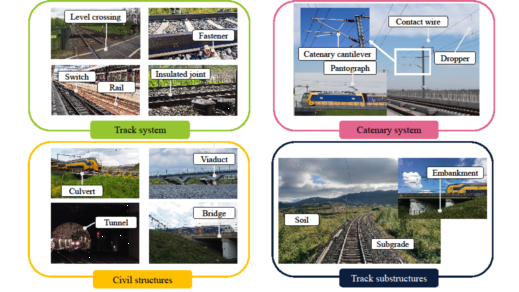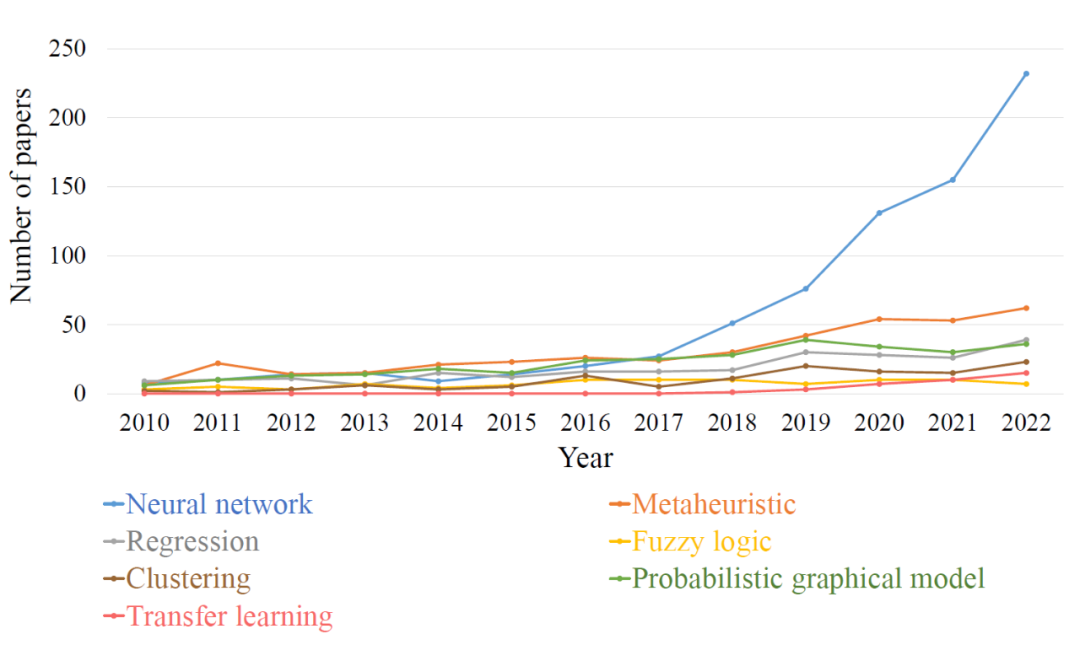1. Section of Railway Engineering, Faculty of Civil Engineering and Geosciences, Delft University of Technology, 2628 CN
Delft, The Netherlands;
2. Praedico, 3821 BM Amersfoort, The Netherlands;
3. ProRail, 3511 EP Utrecht,The Netherlands;
4. Deutsche Bahn, 60329 Frankfurt,Germany;
5.Delft Center for Systems and Control,Delft University of Technology,The Netherlands;
通过扩大铁路在交通运输中的作用,铁路行业能够为各国实现可持续发展目标做出巨大贡献。为了实现这一目标,铁路行业必须应对复杂的技术和社会挑战,同时开发适合的先进方法以充分满足各类铁路基础设施类型和状态的需求。近二十多年来,人工智能方法已被越来越广泛地成功应用于解决铁路基础设施领域的实际问题。本文综述了人工智能方法在铁路基础设施领域的发展。首先,本文概述了2010至2022 年间发表的该领域期刊论文。文献统计显示,人工智能应用于铁路基础设施领域的论文数量不断增加。随后,本文选择了关键人工智能方法并讨论了它们在铁路基础设施中的应用。最后,本文探讨了该领域当前所面临的挑战,并指出了未来的机遇。https://academic.oup.com/iti/advance-article/doi/10.1093/iti/liad016总结了过去十年人工智能方法应用于铁路基础设施的发展趋势;
综述了七类人工智能方法在不同铁路基础设施中的应用;
阐述了该领域当前面临的四大挑战;
提出了该领域的十大未来研究方向与机遇。



及主要子系统中的应用分布
本期推文-英文介绍
Artificial Intelligence in Railway Infrastructure: Current Research, Challenges, and Future Opportunities
Alfredo Nunez,Hongrui Wang,Ali Jamshidi, Arjen Zoeteman, Burchard Ripke, Rolf Dollevoet, Bart De Schutter and Zili Li
https://doi.org/10.1093/iti/liad016
The railway industry has the potential to strongly contribute to achieving various sustainable development goals by expanding its role in the transportation system of different countries. To realize that, complex technological and societal challenges are to be addressed, along with the development of suitable state-of-the-art methodologies fully tailored to the particular needs of the wide variety of railway infrastructure types and conditions. Artificial intelligence (AI) methods have been increasingly and successfully applied to solve practical problems in the railway infrastructure domain for over two decades. This paper proposes a review of the development of AI methods in railway infrastructure. First, we present a survey limited to selected journal papers published between 2010-2022. Bibliographical statistics are obtained, showing the increasing number of contributions in this field. Then, we select key AI methodologies and discuss their applications in the railway infrastructure. Next, AI methods for key railway components are analyzed. Finally, current challenges and future opportunities are discussed.

